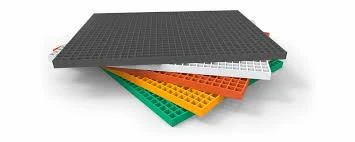
-
 Afrikaans
Afrikaans -
 Albanian
Albanian -
 Amharic
Amharic -
 Arabic
Arabic -
 Armenian
Armenian -
 Azerbaijani
Azerbaijani -
 Basque
Basque -
 Belarusian
Belarusian -
 Bengali
Bengali -
 Bosnian
Bosnian -
 Bulgarian
Bulgarian -
 Catalan
Catalan -
 Cebuano
Cebuano -
 China
China -
 China (Taiwan)
China (Taiwan) -
 Corsican
Corsican -
 Croatian
Croatian -
 Czech
Czech -
 Danish
Danish -
 Dutch
Dutch -
 English
English -
 Esperanto
Esperanto -
 Estonian
Estonian -
 Finnish
Finnish -
 French
French -
 Frisian
Frisian -
 Galician
Galician -
 Georgian
Georgian -
 German
German -
 Greek
Greek -
 Gujarati
Gujarati -
 Haitian Creole
Haitian Creole -
 hausa
hausa -
 hawaiian
hawaiian -
 Hebrew
Hebrew -
 Hindi
Hindi -
 Miao
Miao -
 Hungarian
Hungarian -
 Icelandic
Icelandic -
 igbo
igbo -
 Indonesian
Indonesian -
 irish
irish -
 Italian
Italian -
 Japanese
Japanese -
 Javanese
Javanese -
 Kannada
Kannada -
 kazakh
kazakh -
 Khmer
Khmer -
 Rwandese
Rwandese -
 Korean
Korean -
 Kurdish
Kurdish -
 Kyrgyz
Kyrgyz -
 Lao
Lao -
 Latin
Latin -
 Latvian
Latvian -
 Lithuanian
Lithuanian -
 Luxembourgish
Luxembourgish -
 Macedonian
Macedonian -
 Malgashi
Malgashi -
 Malay
Malay -
 Malayalam
Malayalam -
 Maltese
Maltese -
 Maori
Maori -
 Marathi
Marathi -
 Mongolian
Mongolian -
 Myanmar
Myanmar -
 Nepali
Nepali -
 Norwegian
Norwegian -
 Norwegian
Norwegian -
 Occitan
Occitan -
 Pashto
Pashto -
 Persian
Persian -
 Polish
Polish -
 Portuguese
Portuguese -
 Punjabi
Punjabi -
 Romanian
Romanian -
 Russian
Russian -
 Samoan
Samoan -
 Scottish Gaelic
Scottish Gaelic -
 Serbian
Serbian -
 Sesotho
Sesotho -
 Shona
Shona -
 Sindhi
Sindhi -
 Sinhala
Sinhala -
 Slovak
Slovak -
 Slovenian
Slovenian -
 Somali
Somali -
 Spanish
Spanish -
 Sundanese
Sundanese -
 Swahili
Swahili -
 Swedish
Swedish -
 Tagalog
Tagalog -
 Tajik
Tajik -
 Tamil
Tamil -
 Tatar
Tatar -
 Telugu
Telugu -
 Thai
Thai -
 Turkish
Turkish -
 Turkmen
Turkmen -
 Ukrainian
Ukrainian -
 Urdu
Urdu -
 Uighur
Uighur -
 Uzbek
Uzbek -
 Vietnamese
Vietnamese -
 Welsh
Welsh -
 Bantu
Bantu -
 Yiddish
Yiddish -
 Yoruba
Yoruba -
 Zulu
Zulu
grp food grade equipment
Understanding GRP Food Grade Equipment Essential for Safe Food Processing
In the food processing industry, ensuring the safety and quality of products is paramount. This is where GRP (Glass Reinforced Plastic) food grade equipment comes into play. GRP is extensively used in various sectors due to its unique properties, making it an ideal choice for food processing applications. In this article, we will explore the benefits, applications, and the importance of GRP food grade equipment in maintaining food safety standards.
What is GRP Food Grade Equipment?
GRP food grade equipment is specifically designed to be safe for food contact. Composed of a polymer matrix reinforced by glass fibers, GRP offers a combination of lightweight, durability, and resistance to corrosion. This makes it particularly suitable for environments where hygiene and cleanliness are critical. The food grade aspect refers to the materials used in the equipment, ensuring they meet stringent regulatory standards for safety when in contact with food products.
Benefits of GRP Food Grade Equipment
1. Hygiene and Safety One of the primary advantages of GRP equipment is its non-porous surface, which helps prevent the buildup of bacteria and contaminants. This characteristic is crucial in food processing, where hygiene is vital to avoid foodborne illnesses.
2. Durability and Longevity GRP is known for its strength and resistance to various chemicals, including acidic and alkaline substances often found in food processing environments. This durability translates to a longer lifespan for equipment, reducing the need for frequent replacements and maintenance.
3. Lightweight Compared to traditional materials like metal or concrete, GRP is significantly lighter. This makes installation and handling easier, which can contribute to operational efficiencies in food processing facilities.
grp food grade equipment

4. Customizable GRP can be molded into various shapes and sizes, allowing manufacturers to create customized solutions tailored to specific food processing needs. This flexibility helps businesses optimize their production lines without compromising safety.
5. Corrosion Resistance Since GRP is resistant to corrosion, it can withstand harsh cleaning chemicals and environmental conditions without degrading. This characteristic is vital in maintaining the integrity of food processing equipment.
Applications of GRP Food Grade Equipment
GRP food grade equipment is widely used in various applications within the food industry. Some common examples include
- Storage Tanks GRP tanks are ideal for storing liquids, such as oils, sauces, and other food products, while ensuring contamination-free conditions. - Conveyor Systems Food grade GRP components can be integrated into conveyor systems, facilitating the safe movement of food products through different stages of processing. - Piping Systems GRP pipes are used for transporting liquids and slurries, providing a safe and durable solution for food processing facilities. - Workstations and Machinery Custom GRP workstations, tables, and machinery parts ensure that food handling meets safety regulations while offering ease of cleaning.
Conclusion
The importance of GRP food grade equipment cannot be overstated in today’s food processing industry. With the growing emphasis on food safety and quality, adopting materials that meet regulatory standards while providing efficiency and durability is essential. GRP food grade equipment not only helps businesses comply with industry regulations but also enhances overall operational performance. By investing in high-quality GRP solutions, food processors can ensure the safety and quality of their products, ultimately contributing to consumer trust and satisfaction.









